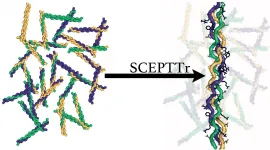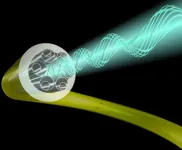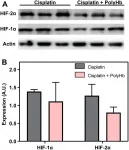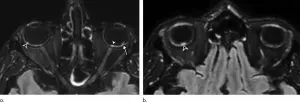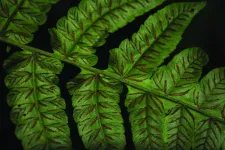(Press-News.org) A NEW study from the University of Chichester has shed light on how people coped psychologically with the sudden and life-changing disruption caused by COVID-19.
This new publication, by Chichester's Professor Laura Ritchie and PhD candidate Benjamin Sharpe, in collaboration with Professor Daniel Cervone of the University of Illinois at Chicago, provides a unique snapshot into people's understanding of their goals and self-beliefs amidst a shared, unexpected alteration of the daily landscape during lockdown.
Ritchie and colleagues collected their study data during the start of the initial lockdown period in March 2020, a time when people were first told stay home.
To study people's attitudes toward their goals as well as their beliefs in their capabilities for accomplishing them (self-efficacy), the research team devised novel methods that combined traditional survey items with open-ended narrative reports that allowed people to describe their pandemic-era experiences in their own words.
Their findings reveal, as expected, that the pandemic lowered self-efficacy beliefs. When the lockdown introduced impediments to the pursuit of daily projects, people became less confident in accomplishing them.
Yet the findings also revealed an unexpected result.
Despite the life disruptions and lowering of confidence, many people still cared deeply about pursuing their goals. Even though over two-thirds of people believed they could no longer accomplish their goal now that current events had unfolded, yet they still cared about it.
Those who continued to pursue their goals exhibited a range of creative strategies, demonstrating their tenacity to find a way in the midst of the restrictions and uncertain times.
Co-author Prof Cervone said: "A recurrent finding from psychological science in recent years is relevant here. People often display surprising resilience in the face of life disruptions. Our new findings reveal one potential source of resilience during the early COVID-19 lockdown: the tenacious, strategically-creative pursuit of meaning personal projects - a pursuit that, for many people, continuous even while the individual expresses some doubt about their ability fully to reach their original aims."
Professor Brian R Little, Director of the Social Ecology Research Group Cambridge University and world-renowned expert in the study of personal projects and well-being, describes this new publication by Ritchie, Cervone, and Sharpe as "a creative and important study of how people pursue their projects under the challenging conditions of COVID."
He added: "The convergence of quantitative and qualitative results is very encouraging for research on efficacy in project pursuit. The authors have documented a dramatic drop in efficacy on personal projects that had been initiated before the epidemic compared with their current lock-down status."
Author Professor Laura Ritchie, a Professor Learning and Teaching at the University of Chichester, said: "We were very pleased to successfully carry out this cross-continental collaboration within the narrow window for data collection to meet the deadline for this special call, especially considering we too were in Lockdown."
Benjamin Sharpe, research assistant to Professor Ritchie, added: "This has been an exciting project and I have been keen to follow the trend to increase transparency in research through following open science practices. Our dataset is fully accessible."
A potential benefit of the approach of Ritchie, Cervone, and Sharpe is that it yields a 'library' of participant-provided pandemic-related coping strategies. These self-reported strategies involved aspects of emotional and problem-focused coping, involving active planning and engaging with metacognitive strategies.
Professor Little concluded: "The study provides an elegant demonstration that in the age of COVID, even projects that people have had to put on hold may sustain meaning in their radically upended lives. It deserves to be read widely."
INFORMATION:
The research paper, titled Goals and Self-efficacy Beliefs During COVID-19 Lockdown: A Mixed Methods Analysis, was published by Frontiers in the special collection: Coronavirus Disease (COVID-19): Psychological, Behavioral, Interpersonal Effects, and Clinical Implications for Health Systems.
DOI number: 10.3389/fpsyg.2020.559114
HOUSTON - (Feb. 15, 2021) - Collagen is the king of biological proteins, and now it has a SCEPTTr.
That's the handle of an algorithm developed by Rice University scientists who study natural and synthetic versions of collagen, which accounts for about a third of the body's proteins and forms the fibrous glue in skin, bones, muscles, tendons and ligaments.
The program -- full name, Scoring function for Collagen-Emulating-Peptides' Temperature of Transition -- accurately predicts the stability of collagen triple helices, the primary structure that forms fibrils.
The Rice team led by chemist and bioengineer Jeffrey ...
According to some estimates, chronic pain affects up to 40% of Americans, and treating it frustrates both clinicians and patients--a frustration that's often compounded by a hesitation to prescribe opioids for pain.
A new study from the University of Michigan School of Dentistry confirms that a low dose of a drug called naltrexone is a good option for patients with orofacial and chronic pain, without the risk of addiction, said first author Elizabeth Hatfield, a clinical lecturer in the Department of Oral and Maxillofacial Surgery and Hospital Dentistry.
Naltrexone is a semisynthetic opioid first developed in ...
HOUSTON - (Feb. 15, 2021) - Rice University engineers have suggested a colorful solution to next-generation energy collection: Luminescent solar concentrators (LSCs) in your windows.
Led by Rafael Verduzco and postdoctoral researcher and lead author Yilin Li of Rice's Brown School of Engineering, the team designed and built foot-square "windows" that sandwich a conjugated polymer between two clear acrylic panels.
That thin middle layer is the secret sauce. It's designed to absorb light in a specific wavelength and guide it to panel edges lined with solar cells. Conjugated polymers are chemical compounds ...
Researchers from the University of Southampton and Université Laval, Canada, have successfully measured for the first time back-reflection in cutting-edge hollow-core fibres that is around 10,000 times lower than conventional optical fibres.
This discovery, published this week in The Optical Society's flagship Optica journal, highlights yet another optical property in which hollow-core fibres are capable of outperforming standard optical fibres.
Research into improved optical fibres is key to enable progress in numerous photonic applications. Most notably, these would improve Internet performance ...
Oncotarget recently published "Polymerized human hemoglobin increases the effectiveness of cisplatin-based chemotherapy in non-small cell lung cancer" which reported that unfortunately, a significant portion of NSCLC patients relapse due to cisplatin chemoresistance.
Administration of hemoglobin-based oxygen carriers is a promising strategy to alleviate hypoxia in the tumor, which may make cisplatin more effective.
The R-state PolyHb administered in this study is unable to deliver O2 unless under severe hypoxia which significantly limits its oxygenation potential.
In vitro sensitivity studies indicate that the administration of PolyHb increases the effectiveness of cisplatin under ...
BOSTON -- While PCR testing has been used widely for COVID-19 diagnosis, it only provides information on who is currently infected. Antibody testing can tell who has been previously exposed to SARS-CoV-2, the virus that causes COVID-19, a metric that is essential for tracking spread across a population. It may also, as a study recently published in the journal Nature Communications shows, hold the key to understanding the immune response to the virus.
Led by Galit Alter, PhD, Core Member of the Ragon Institute of MGH, MIT and Harvard, this study found that while antibodies against SARS-CoV-2 may be a good way to measure exposure to the virus, their presence alone wasn't enough to determine if a person had long-lasting protection. Instead, antibody effector functions associated ...
OAK BROOK, Ill. - Radiomics--the extraction of very detailed quantitative features from medical images--provides a refined understanding of how cocaine use and other risk factors affect the course of coronary artery disease, according to a study published in Radiology. Researchers said the study shows the power of radiomics to improve understanding of not just cardiovascular disease, but cancer and other conditions as well.
Coronary artery disease typically develops over time as plaque builds up inside the arteries. This process, known as atherosclerosis, ...
OAK BROOK, Ill. - Researchers using MRI have found significant abnormalities in the eyes of some people with severe COVID-19, according to a study published in the journal Radiology. The study results support the need for eye screening in these patients to provide appropriate treatment and management of potentially severe ophthalmological manifestations of COVID-19.
The COVID-19 pandemic has affected more than 100 million people since it began early in 2020. While the virus primarily attacks the lungs, it has been linked with eye abnormalities ...
Launched in 1988, the Global Polio Eradication Initiative (GPEI) stands out as one of the largest, internationally coordinated global public health major projects conducted to date, with cumulative spending of over $16.5 billion for 1988-2018, according to the World Health Organization (WHO). More than 30 years later, stubborn outbreaks of wild poliovirus still occur in Afghanistan and Pakistan, where cases have been increasing since 2018. The global eradication of polio continues to be an elusive goal.
A special issue of the journal Risk Analysis, titled "Global Poliovirus Risk Management and Modeling," looks at the current status of polio eradication ...
Earth is home to millions of known species of plants and animals, but by no means are they distributed evenly. For instance, rainforests cover less than 2 percent of Earth's total surface, yet they are home to 50 percent of Earth's species. Oceans account for 71 percent of Earth's total surface but contain only 15 percent of Earth's species. What drives this uneven distribution of species on Earth is a major question for scientists.
In a paper published February 16 in the Journal of Biogeography an international team of researchers led by Jacob S. Suissa, Ph.D. Candidate in the Department of Organismic and Evolutionary Biology, ...

